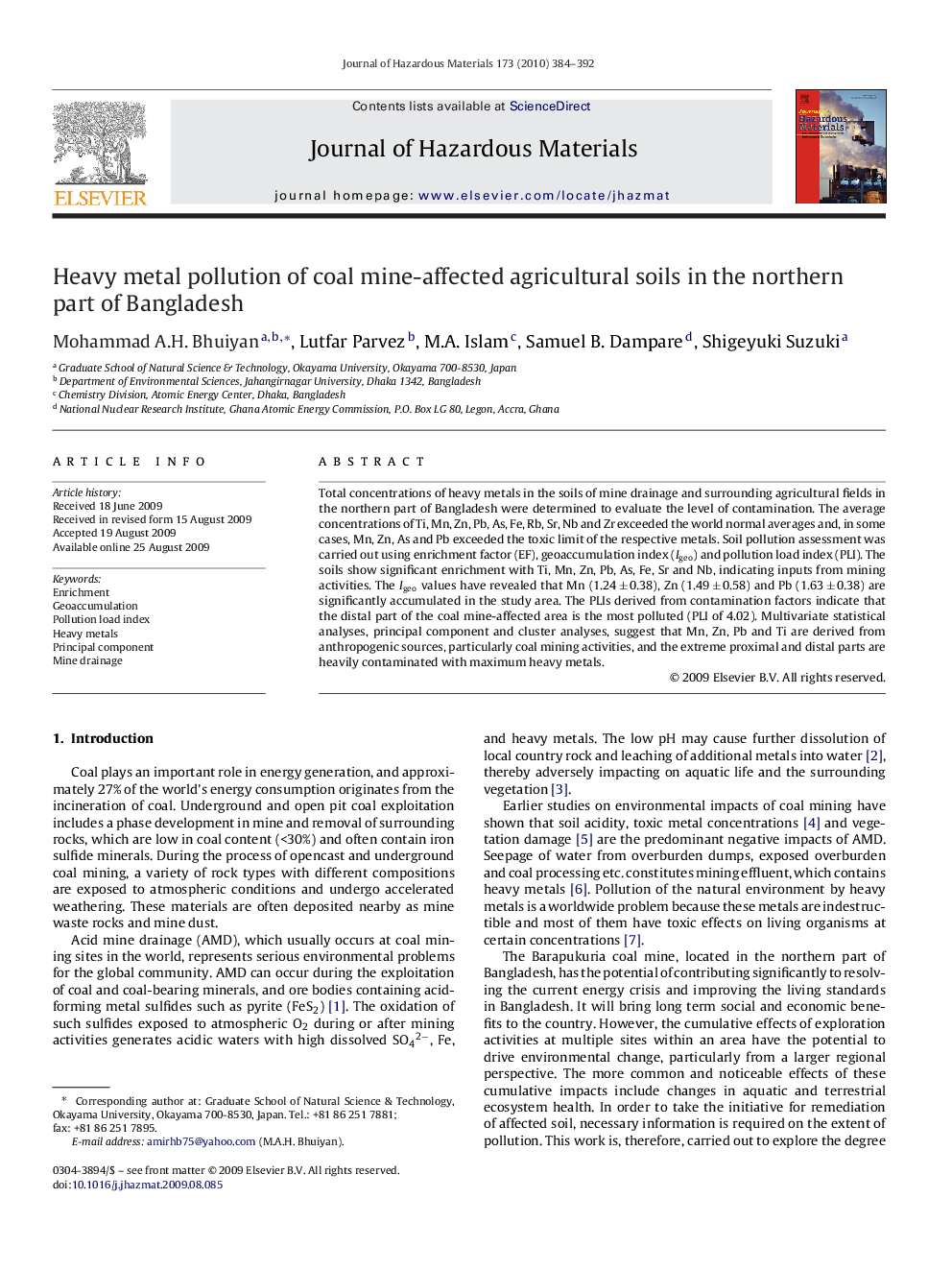| Article ID | Journal | Published Year | Pages | File Type |
|---|---|---|---|---|
| 580979 | Journal of Hazardous Materials | 2010 | 9 Pages |
Abstract
Total concentrations of heavy metals in the soils of mine drainage and surrounding agricultural fields in the northern part of Bangladesh were determined to evaluate the level of contamination. The average concentrations of Ti, Mn, Zn, Pb, As, Fe, Rb, Sr, Nb and Zr exceeded the world normal averages and, in some cases, Mn, Zn, As and Pb exceeded the toxic limit of the respective metals. Soil pollution assessment was carried out using enrichment factor (EF), geoaccumulation index (Igeo) and pollution load index (PLI). The soils show significant enrichment with Ti, Mn, Zn, Pb, As, Fe, Sr and Nb, indicating inputs from mining activities. The Igeo values have revealed that Mn (1.24 ± 0.38), Zn (1.49 ± 0.58) and Pb (1.63 ± 0.38) are significantly accumulated in the study area. The PLIs derived from contamination factors indicate that the distal part of the coal mine-affected area is the most polluted (PLI of 4.02). Multivariate statistical analyses, principal component and cluster analyses, suggest that Mn, Zn, Pb and Ti are derived from anthropogenic sources, particularly coal mining activities, and the extreme proximal and distal parts are heavily contaminated with maximum heavy metals.
Related Topics
Physical Sciences and Engineering
Chemical Engineering
Chemical Health and Safety
Authors
Mohammad A.H. Bhuiyan, Lutfar Parvez, M.A. Islam, Samuel B. Dampare, Shigeyuki Suzuki,
